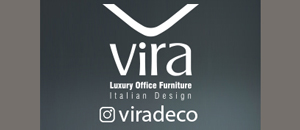کنفرانس بین المللی معماری پایدار و فرهنگ، تاریخ، هویت و میراث
- سه شنبه, فروردین 26, 1393, 0:03
- اخبار معماری
- ثبت نظر

• مقدمه:
یکی از چالش های اساسی طراحی زیست محیطی در اوایل قرن بیست و یکم نیاز به کاهش میزان انرژی و منابع زیست محیطی است که روزانه مصرف می کنیم، به شرط آنکه در عین حال کیفیت زندگی برای همه ثابت باشد و یا افزایش پیدا کند.
از سوی دیگر معیار های معتبر بعنوان الگوهای موثر در گذشته و در تعیین زندگی پایدار نیز بسیار حائز اهمیت هستند، در این شرایط و باور به اینکه معماری گذشته ی ایران واجد ارزش هایی بوده که آن را به طبیعت و فضامندی نزدیک می سازد اگر چنین باشد که هست باید بگوییم معماران ایرانی در دوره های مختلف تاریخی سعی کرده اند که زیست جهان انسانی را رعایت کنند و در این زمینه روش شناسی متکثر خود را هم داشته اند چنان که تنوع اشکال و سبک های معماری در کشور بیانگر تفاوت در دیدگاه های معمارانه است که به اقتضای بافت اقلیمی و امکانات موجود اجرا شده است به همین ترتیب فضاهای اندرونی و بیرونی به گونه ای طراحی می شده اند که ضمن ایجاد تداخل به فاصله گذاری هم توجه شود. مورخان و معماران غربی شد، فضامندی بناهای ایرانی را خوب تشخیص داده و درباره آن به تفضیل نوشته اند. انگلبرت کمپفرت که در قرن هفدهم به ایران آمده و سفرنامه ی خواندنی ای هم نوشته، باغ هشت بهشت اصفهان را چنین توصیف کرده است : در طرف مغرب متصل به باغ گلستان، باغ بلبل قرار دارد.
با توجه به اهمیت مطالعات ریشه ای در فرهنگ کشورمان به عنوان تجلی آن در زندگی مدرن امروز با مفاهیم پایداری، کنفرانس معماری پایدار با زمینه های مطالعاتی، فرهنگی، تاریخ ، هویت و میراث برگزار می گردد.
• سخنرانان و موضوع ارائه به شرح زیر است:
مقدمه : ۱۰ دقیقه – Ahmad Zohadi
The nececity to pay attention to the history, essence and culture of any socity guaranties sustainability in today’s life.
when we are present in a spiritual place, we experienss timelessness.
ضرورت پرداختن به تاریخ، اصالت و فرهنگ هر جامعه ضامن وجود پایداری در فضای زندگی امروز است.
۴۵دقیقه – Rassem Badran
URBAN THREADS AND NOT URBAN THREATS (The evolving Narratives of place and people)
The purpose of this presentation is to shed the light on the serious problems associated with the newly planned cities in the developing countries in general, and in the Arab region in specific where both decision makers and urban planners are to be blamed.
The decision makers from the one hand work on developing urban growth strategies neglecting those who inhabit places and who will be affected the most with the proposed systems of change. Planners are on the other hand responsible of the situation our cities have arrived to, once they started thinking of planning as a job with good financial return and stopped somehow believing in the noble mission of their profession . Planners now days are sorrowfully culturally ignorant and their work has lost its ability to contribute to the meanings and the values people carry within themselves, and focus instead on quantitative based solutions that are not place specific.
In some exceptional cases, planners can make a difference, being sensitive to cultural, historic, geographic,technological evolutions and climatic, environmental considerations where their work becomes a response not only to physical issues, but also to the non-physical and even beyond. These positive contributions to city planning are what we would like to focus on in my presentation.
I believe liberation movements against dictatorship regimes in the Arab world – both African and Asian – shall have a significant role in refertalizing those meanings and values…… our urban fabrics have lost its qualities and meanings while cities were expanding. I hope our cities will once again be able to reconstruct the collective memory,and sense of place and once again will empower people and instill inside them a sense of gratitude and belonging to the place they inhabit. I believe this is the time for cities to start a balanced growth between the machine and the human, the vehicle and the pedestrian, the aesthetic and the functional, the spiritual and the material. A growth that is logical, and always in harmony with all surrounding realities, and that holds the promise of better lives for communities
The presented schemes -partially executed and others acknowledged. As successful design proposals(which has been regionally and internationally awarded) shows to what extend they respect the divers multi cultural,social , technological and environmental aspects. Of the place regardless it,s geography. And historical background They cover different building typologies ranging from micro scale -single project- to micro size -large urban projects- in the region such as (asia-africa),in addition to far east and europe . Because of there design qualities many of them are considered As references and study cases by profissionalls, scholars and researchers world wide due to there intensive , critical , sensitive, contextual and .it,s high level and unique analytical design methodologies
۴۵ دقیقه – Nader Ardalan
ENVISIONING FUTURE CITY PARADIGMS
Sustainable Urbanism, Social Equity, Nature and the Sublime
تجسم الگوهای آینده
۴۵ دقیقه – Bahram Shirdel
ARCHITECTURE: WELCOME TO 21ST CENTURY
معماری: خوش آمدید به قرن بیست و یکم
۴۵ دقیقه – Faryar Javaherian
THE AESTHETICS OF SUSTAINABILITY
زیباییشناسی پایداری
(نه هر آنچه سبز است زیباست)
۳۰ دقیقه – Aidin Aghdashloo
CONTEMPORARY IRANIAN ART
هنر معاصر ایران
• دبیرخانه کنفرانس: دفتر مرکزی مجله معماری و ساختمان
(ثبت نام از طریق سایت www.memary.net تا پایان وقت اداری پنجم اردیبهشت ماه ۱۳۹۳)
• زمان کنفرانس: پنجشنبه یازدهم اردیبهشت ماه ۱۳۹۳
از ساعت ۹ صبح الی ۱۷
سایت منبع: www.Memarnews.com
share Memarnews content









